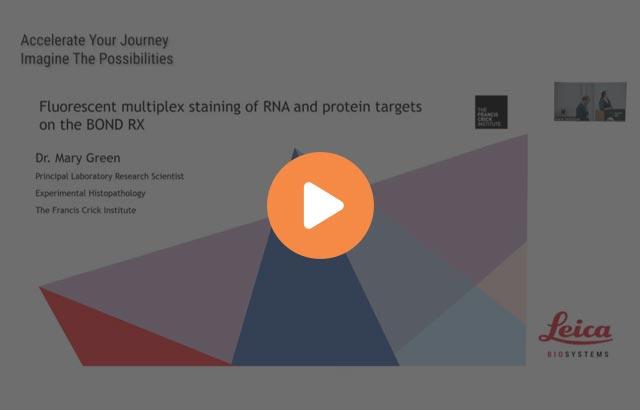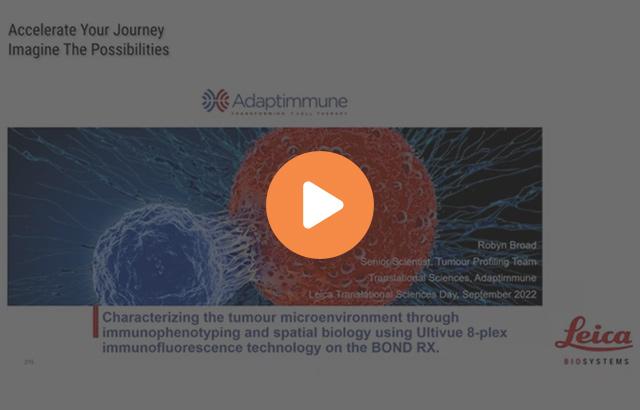It is Time for TIME (Tumor Immune Microenvironment) in Experimental and Diagnostic Pathology

Cancer initiation and virulence depends on mechanisms to evade host immunosurveillance and suppression of early invasion and growth. Distinct phenotypes of the immune infiltrates in and around cancers derive from differing mechanisms. Some very good prognosis cancers are immune "deserts" with very little immune cell infiltration. These tumors register as normal or self to the immune system, accompanied by a more normal (less aggressive) behavior. Meanwhile, the most aggressive appearing cancers elicit the most inflammation. These tumors employ a variety of mechanisms to evade immune suppression. The now well known immune checkpoint PDL1 aberrantly expressed by tumor cells (or induced in surrounding immune cells) has provided a critical target for therapy, effecting cures in a subset of previously incurable patients. Overall, however, this remains a small subset. Advanced generation mouse models provide an opportunity to explore new treatment protocols. For example, we have shown that immune "priming" augments PDL1 checkpoint inhibitor therapy. In another model, we find that tumors with an "immune excluded" phenotype, where a brisk infiltrate is seen surrounding but not infiltrating a tumor, can be attributed to the simultaneous expression of macrophage chemoattracting and repelling paracrine factors. HER2 amplification, seen in 15% of invasive breast cancers but twice as many intraductal cancers (DCIS) provides a prototype tumor antigen and another opportunity to explore rational combinations of immune and cell targeted therapies. There is growing list of additional immune synapse targets with drugs in development and clinical trials now. Meanwhile, predictive biomarkers for specific targets or combinations of targets are also in active development. As we and others have shown, advanced generation mouse models of human disease play a critical role in the development of mechanistic evidence for new therapies and new diagnostic and predictive biomarkers.
Learning Objectives
- Review patterns and mechanisms of the tumor immune microenvironment
- Understand examples of experimental pathology in immune intact models of disease
- Promote active interest in the evolving field of cancer immunotherpy as a personalized medicine approach
Webinar Transcription
- It’s Time for TIME Alexander “Sandy” Borowsky Professor of Pathology and Laboratory Medicine Center for Immunology and Infectious Diseases
- Disclosures Bristol-Meyers Squibb/Celgene: Funded through Investigator Sponsored Research (ISR) program. Discovery proposal. Leica/Aperio: Funded to run the “Genesis” study for primary diagnosis from whole slide images. Honorarium for this presentation. Histolix: Slide-free histology (Levenson and Fereidouni). Pfizer: Pfizer Protocol A9001502, Treatment Resistance Following Therapies (TRANSLATE) site PI. Agenda: In contracting to join the “FLEX” registry. None of these has actually paid me, only funding for the research projects.
- Objectives • Introduction into the complexity of the TIME and the development of new cancer treatments though directed interventions. • Experimental pathology, models of disease, and new technologies for clinical translation. • How does this all impact the three biggest problems in breast cancer today: 1) Treatment of metastatic disease; 2) Overtreatment of indolent disease; 3) The failed promise of early diagnosis. • A conceptual framework for building team(s) to tackle questions beyond the scope of a single lab/single gene pathway.
- EGFR Mutations in Lung Cancer Sensitize to Tyrosine Kinase Inhibitors (Erlitinib and Gefitinib) • 2003-2004
- The Subway Map Hallmarks of Cancer Intrinsic to the cancer cell Involves the cancer cells in context Doug Hanahan and Bob WeinbergAbout 2000 About 2011
- ImmunoTherapy for Cancer
- PD1/PDL1 Checkpoint Inhibitors •Complete Response still only 2.2% •Partial Response close to 20% •Biomarkers improve selection, include: •IHC for PD-L1 on Tumor Cells •TMB (total mutational burden) • IHC for PD-L1/PD1 on non-tumor cells in proximity
- Story Number 1: Improving PD1/PDL1 Therapy Efficacy •First, the mouse…
- Improving PDL1 Therapy with Combinations
- Priming and multi-step ablation protocol
- Analysis of immune cell infiltrates in the context of neoadjuvant anti-PD-1 (pembrolizumab) Primary endpoint Pathological complete response (pCR) Defined as no residual invasive cancer in the breast or lymph nodes at time of surgery Multiplex Multispectral Image Analyses I-SPY 2 Trial Schema (HER2- breast cancer) Michael Campbell Laura Esserman
- NCI MCL (Molecular and Cellular Characterization of Screen Detected Lesions) Consortium: Pathology. • Breast, Prostate, Lung, and Pancreas Groups set a priority for development of a consensus ImmuneScore method for evaluating the Tumor Immune MicroEnvironment (TIME) FOR RESEARCH USE ONLY. NOT FOR USE IN DIAGNOSTIC PROCEDURES
- Incidence Breakdown • Some of these... Are NOT potentially lethal. • Which ones? At least 700,000 Invasive and Almost all the DCIS
- Who is to blame for OVERDIAGNOSIS?
- NCI MCL (Molecular and Cellular Characterization of Screen Detected Lesions) Consortium: Pathology. • Breast, Prostate, Lung, and Pancreas Groups set a priority for development of a consensus ImmuneScore method for evaluating the Tumor Immune MicroEnvironment (TIME) FOR RESEARCH USE ONLY. NOT FOR USE IN DIAGNOSTIC PROCEDURES
- Scanned image unmixed image Tissue segmentation Cell segmentation Phenotyping Phenotyping Scoring tumor area Scoring stroma area DNA/DAPI CD4/520 KRT/570 CD8/620 FoxP3/650 CD3/690 DNA/DAPI CD4/520 KRT/570 CD8/620 FoxP3/650 CD3/690 Tumor Stroma Tumor T-cells (CD3) Others T-cells (CD4) T-cells (CD8) Treg Score CD3 posi CD3 nega Scoring in tumor CD3 posi CD3 nega Scoring in stroma CD3 posi CD3 nega Scoring output to per cell data matrix for analysis. KRT signal is too strong and affects other channels (e.g. 620). BRC243v_B129_Core[1,5,B]_[12411,45408] A process to analyze 6-plex IHC (CD3, CD4, CD8, FoxP3, KRT and DNA) images.
- Scanned image unmixed image Tissue segmentation Cell segmentation Phenotyping Phenotyping Scoring tumor area Scoring stroma area DNA/DAPI CD4/520 KRT/570 CD8/620 FoxP3/650 CD3/690 DNA/DAPI CD4/520 KRT/570 CD8/620 FoxP3/650 CD3/690 Tumor Stroma Tumor T-cells (CD3) Others T-cells (CD4) T-cells (CD8) Treg Score CD3 posi CD3 nega Scoring in tumor CD3 posi CD3 nega Scoring in stroma CD3 posi CD3 nega KRT signal is too strong and affects other channels (e.g. 620). Human breast cancer tissue stained with 6-plex IHC (CD3, CD4, CD8, FoxP3, KRT and DNA). BRC243v_B129_Core[1,2,B]_[12411,38323] Scoring output to per cell data matrix for analysis.
- Tumor Stroma CD3 55.56 464.21 CD4 42.65 149.2 CD8 6.65 73.8 FoxP3 49.69 68.86 KRT 325.2 82.04 others 85.3 1219.3Tumor T-cells (CD3) Others T-cells (CD4) T-cells (CD8) Treg Tumor Stroma CD3 42 78.13 CD4 103.2 34.16 CD8 0 0.39 FoxP3 172 150.8 KRT 1009.8 33.18 others 319.1 655.9 Cell density Cell density
- Analysis of immune cell infiltrates in the context of neoadjuvant anti-PD-1 Primary endpoint Pathological complete response (pCR) Defined as no residual invasive cancer in the breast or lymph nodes at time of surgery Multiplex Multispectral Image Analyses I-SPY 2 Trial Schema (HER2- breast cancer) Michael Campbell Laura Esserman
- Immune landscapes in breast cancer 5 cases stained with a panel of 6 markers illustrates immune heterogeneity across cases Which of these immune landscapes are associated with response to neoadjuvant pembrolizumab? CD3 – T cells CD8 – cytotoxic T cells CD68 – macrophages PD-1 – immune checkpoint PD-L1 – immune checkpoint Pan-cytokeratins – tumor #1 #2 #3 #4 #5
- Spatial proximity scores associated with response to neoadjuvant pembrolizumab 0 5 10 15 20 25 30 35 40 45 Tumor -> T p = 0.004 SPS NopCR pCR 0 5 10 15 20 25 30 35 40 45 50 Tumor -> Tc p = 0.032 SPS NopCR pCR 0 5 10 15 20 25 30 35 PD-1+ T -> PD-L1+ p = 0.063 SPS NopCR pCR 0 5 10 15 20 25 30 35 40 45 50 PD-1+ Tc -> PD-L1+ p = 0.067 SPS NopCR pCR
- Summary of associations between immune biomarkers and response by receptor subtypes in the pembro and control arms Size of Dot: Proportional to –log10(p) from logistic model Smaller p valueLarger p value Higher in pCR Higher in non-pCR Not significant p<0.05 Color of Dot: Direction of Association Background Color:
- Drugging the Immune Synapse • HYPOTHESIS: Every Cancer Must Evade the Immune System • How do we test which of these is active/important in an individual’s cancer?
- A Checkpoint Screen Assay: All Cancers Must Employ One or More Pathways to Evade Immune System • Short term: Can we select clinical trials for immunotherapy based on an individual’s cancer? • Long term: Can we choose from approved therapy(s) using this approach? Molecules Target B7H3 APC B7H4 APC B7H5 (VISTA) TIL, MDSC, Treg LAG3 T cells/DC TIM3 T cells/Various OX40 naïve T cells GITR Activated T cells testing now IDO-1 DC/Macrophage/tumor cells ICOS Activated T cells
- OX40/CD3
- LAG3
- GITR
- VISTA (B7H5)/CD3
- VISTA (B7H5)
- B7H4 (signal enhanced)
- B7H3
- TIM3
- Drugging the Immune Synapse • HYPOTHESIS: Every Cancer Must Evade the Immune System • How do we test which of these is active/important in an individual’s cancer?
- The Precancer Problem(s) in Breast. • Problem 1: The sharp increase in detection/diagnosis of DCIS with the advent of screening has not been accompanied by a decrease in detecting invasive carcinomas. • Problem 2: Gene expression and sequence analyses of DCIS and adjacent invasive carcinomas do not reveal specific molecular “hits” related to progression... And suggest that our conceptual models are wrong! • Problem 3: The biology is nearly impossible to study in patients. • Problem 4: The highest risk invasive cancers often do not have a detectable intraductal component.
- DCIS is a heterogeneous array of diseases, but is defined by an increased risk for invasive carcinoma, at the site of the biopsy. (implying that unresected disease in the adjacent duct can progress).
- The Evidence Does Not Support Current Standard of Care Intervention NOT urgent • Radiation reduces recurrence • Up to 15% for combined DCIS, IDC, contralateral event • 3-8% for a unilateral invasive event, depending on biology • Radiation does NOT reduce mortality • 20 year follow-up from SEER (Narod et al) • Hormonal therapies • Reduce invasive recurrence by a similar amount as radiation • Mastectomy prevents a unilateral event • Long term follow-up shows the risk is bilateral (prevention) Intervention urgent • High risk DCIS lesions (~5% total) have some mortality risk- 46
- DCIS Immune Taxonomy: New Classifications May Predict Risk and Response to Immunotherapy
- T cell (CD3+/green) TREG (FOXP3/magenta, *green is positive) T cell (CD3+/green which is in multiple ranges of TREGs) TREG1 TREG2 TC suppression
- DCIS Immune Taxonomy: Immune Cell Infiltrates and Spatial Relationships Spatial Proximity (within means): Average number of GreenCells within 25 um of a PurpleCell. PurpleCell , GreenCell = 2 25µm 25µm 25µm 25µm 25µm Spatial Proximity (fraction): Fraction of PurpleCells with a GreenCell within 25 um. PurpleCell , GreenCell = 0.6 DCIS , CD8+ T cell DCIS , T cell DCIS , CD8+ T cell DCIS , CD8- T cell DCIS , T cell DCIS , CD8- T cell T cells CD8- T cells PD-L1+ macrophages PD-L1+ immune cells Macrophages , CD8- T cells Macrophages , T cells Macrophages , CD8+ T cells Macrophages , T cells Macrophages , CD8- T cells CD8+ T cells Macrophages , CD8+ T cells T cells , PD-L1+ macrophages CD8- T cells , PD-L1+ macrophages CD8- T cells , PD-L1+ macrophages T cells , PD-L1+ macrophages CD8+ T cells , PD-L1+ macrophages CD8+ T cells , PD-L1+ macrophages CD8+ T cells , Macrophages T cells , Macrophages CD8- T cells , Macrophages T cells , Macrophages CD8+ T cells , Macrophages CD8- T cells , Macrophages PD-1+ cells PD-L1+ DCIS DCIS , Macrophages DCIS , Macrophages Macrophages CD8- T cells , PD-L1+ immune cells T cells , PD-L1+ immune cells CD8+ T cells , PD-L1+ immune cells CD8+ T cells , PD-L1+ immune cells CD8- T cells , PD-L1+ immune cells T cells , PD-L1+ immune cells CD8- T cells , PD-L1+ DCIS CD8+ T cells , PD-L1+ DCIS T cells , PD-L1+ DCIS CD8+ T cells , PD-L1+ DCIS CD8- T cells , PD-L1+ DCIS T cells , PD-L1+ DCIS CD8- T cells , DCIS CD8+ T cells , DCIS T cells , DCIS CD8- T cells , DCIS T cells , DCIS CD8+ T cells , DCIS Macrophages , DCIS Macrophages , DCIS Immune Cell Population Spatial proximity (within means) Spatial Proximity (fraction)
- PRECANCER ATLAS PILOT PROJECT: Aim 4: The Pathology People Characterize the precancer phenotype and immune microenvironment and determine its relationship with the PML genomic/transcriptomic landscapes • Rationale. Precancer and in situ neoplasia comprises an array of diverse phenotypes within each of the organ sites. These phenotypes are a function of factors including the cell of origin, genome changes, and interplay with the microenvironment. Immuno-editing, in particular, is likely to occur at the precancer stage, as early invasive lesions would be rapidly eliminated without active immune evasion and without the relative immune protection of the in situ niche. • Objective. Characterize, capture, archive, and share (disseminate) the morphologic and molecular phenotypes of the precancer lesions including the precancer immune microenvironment, for all of the lesions sampled in the program.
- Sub-aims: • 4.1: Precancer phenotype analysis. The morphologic subtypes and immunophenotypes will be reviewed and categorized by study pathologists. Immunophenotype will be determined by tissue conservative multiplex IHC methodology. • 4.2: Precancer tumor immune microenvironment analysis. Leveraging the consensus immune cell characterization panels developed in the MCL pathology working group, we will evaluate the immune cell repertoire in and around the precancers. • 4.3: Multidimension histology and IHC image archive. Where possible (as in laser capture methods) pre- and post-laser capture images will document precise populations sampled for the atlas. In addition, serial sections will be used in aims 4.1 and 4.2 above and these data digitized and arrived. Metadata will include all clinical, radiologic report, and pathology report data abstracted to utilize defined data elements from the MCL/EDRN consensus vocabulary server. Note: radiologic images can also be included. We will use the JPL LabCAS system as the initial repository with the expectation that this will be linked to NIH databases or cBioportal for dissemination.
- Breast Prostate Lung Pancreas Categories and Subtypes DCIS, solid, cribriform, micropapillary, etg PIN, papillary, cribriform, flat, foamy AAH, SCCIS Mucinous, non- mucinous, other PanIN, IPMN Gastric, intestinal, papillary, other Grade Nuclear Low, Interm, High, +/- necrosis High only; Others Cytologic grade Low, High Standard Markers ER, PR, Her2 HMWK; AMACR; PTEN; ERG Ttf1, p63/p40, CEA, ALK; CD56, Synp CDX2, Muc1, 14-3-3sigma Additional IHC/chrgISH Markers P53, AR, VDR, Bag1, Ki67, p16, cox2 TelomereFISH, cMyc, Ki67; ETS/45s ISH p53, p16, Her2 MUC4, MUC5, p16, p53, Ki67 Immune Microenv. MCL consensus MCL consensus MCL consensus MCL consensus Metadata Size/extent, margins, treatment (lump/mast; xrt, etc.); Staging (if assoc with cancer); Screen detected, incidental, other. Addl health and family history Size/extent, margins, treatment (bx v. excision); Staging (if assoc with cancer); Screen detected, incidental, other. Addl health and family history Size/extent, margins, treatment (bx v. excision); Staging (if assoc with cancer); Screen detected, incidental, other. Addl health and family history Size/extent, margins, treatment (bx v. excision); Staging (if assoc with cancer); Screen detected, incidental, other. Addl health and family history
- FVB Tg(MMTV-PyV-mT) MINO Models Developing Tg(MMTV-PyV-mT) mammary gland Late Growth Expansile/Invasive Progression Over Time Progression Over Time 0 5 10 15 20 25 4w-4 4w-64w-118w-A8w-B8w-D Weeks Metastases Metastases Metastases 6 lines with programmed latency and metastatic potential
- V
- Loss of the Extracellular Domain of Her2 Michael Shieh Edmonson Fellow 2019
- Encoding Cellular and Intratumor heterogeneity in Her2+ Breast Cancer: Her2 CancerRainbow Mouse WM Organoids RNAScope and H&E co-registry Josh Snyder Duke Univ.
- HER2 Crainbow Invasive Tumors to Study the TIME
- Single Cell RNA Sequence Analysis Two more clues: 1. Wnt7 and Frzd Signalling Between Cancer Cells and Stroma May Maintain the Tumor Promoting Microenvironment 2. Immune Recognition Differences Between p95 and d16
- The Search for the Nascent Lethal Breast Precancer
- Re-classification of DCIS • Some DCIS will not progress, but is a “risk-marker” lesion (like ADH, LCIS, and ALH) • How many “invasive recurrances” of DCIS are actually clonally related? Type A: PRE-CANCER (Treat!) Type B: RISK-MARKER/NOT PRE-CANCER (Watch/risk reduce) • Some DCIS will only progress after a long time... Type C: Indolent Disease (Watch or treat minimally) • Immunosurveillance may prevent progression... Until it lapses? • Can we classify DCIS based on the immune microenvironment.
- The importance of teamwork: Just when you think you’ve got it all figured out… Mother Nature turns out to be far more complex than you ever realized… (I say this a lot, but maybe someone said it first?) The Blind Men and the Elephant. Hindu parable c.1000BC.
- Why Pathology/Pathologist Involvement ? •Cytokine Serology •Flow Cytometry •Tissue Architecture– microanatomic localization of immune cells in and around tumors •Gene Expression •CLIA!
- Summary: • Major problems in cancer: 1. Better treatment of aggressive and metastatic disease. 2. Reducing overdiagnosis and overtreatment of indolent disease. 3. Finding the “real” precancers early: Nascent Lethal Precancers • New technologies for research and translation: 1. Multiplex immunohistochemistry– a blend of flow and histology. 2. Single cell sequence 3. Informatics tools to handle both. • It takes a team of “blind scientists” and the chance to put them together to make meaningful progress.
- Thanks! • Borowsky Lab • Hidetoshi Mori • Jane Chen • Louis Schouter • Neal Hubbard • MCL Consortium Pathologists • Angelo DeMarzo (JHU) • Anirban Maitra (MDA) • Scott Vandenberg (UCSF) • Jaime Rodriguez (Medimmune) • Michael Campbell (UCSF) • UCD Tumor Immune MicroEnvironment Team • Tony Karnezis • Arta Monjazeb • Richard Levenson Lab • Bristol Myers Squibb • Mike Montalto • Mirza Peljto • Pilot Funding from the UCDavis Basic/Translational Seed Grant
About the presenter

Dr. Borowsky is a surgical and molecular pathologist with expertise in cancer diagnostics and model systems for cancer research. His research is primarily focused on human breast cancer and mouse models for this disease with extensive experience and accomplishments on many aspects of experimental pathology and animal models of human disease. He is a translational scientist with expertise in assay development and interpretation in the clinical setting, including experience with radiologic-pathologic image registration and comparative analysis, immunohistochemistry, FISH, and tissue and fixative preparation for conventional and innovative molecular analysis. His lab has pioneered techniques for mammary gland transplantation experiments, and has generated transgenic cancer models. Specific areas of interest in the laboratory include the tumor immune microenvironment, pre-cancer progression and cancer stem cell origins, cancer promoting microenvironments, and regulation of progression and reversion. The lab has a long track record of experimental pathology including interpretation of phenotypes, developmental and cancer, and interpretation of novel immunohistochemical studies, functional imaging technology, image analysis, and data informatics. Additional research interests extend to the development of novel in vivo imaging modalities, and use of these in preclinical and clinical trials. He directs clinical trials at UC Davis, including the completed Leica Genensis study for validation of digital whole slide imaging for pathology diagnosis, and ongoing WISDOM breast cancer screening, and the All of US NIH Precision medicine cohort studies; and leads the Pathology working group in the NCI MCL consortium and the PreCancer Atlas pilot project.
Related Content
Die Inhalte des Knowledge Pathway von Leica Biosystems unterliegen den Nutzungsbedingungen der Website von Leica Biosystems, die hier eingesehen werden können: Rechtlicher Hinweis. Der Inhalt, einschließlich der Webinare, Schulungspräsentationen und ähnlicher Materialien, soll allgemeine Informationen zu bestimmten Themen liefern, die für medizinische Fachkräfte von Interesse sind. Er soll explizit nicht der medizinischen, behördlichen oder rechtlichen Beratung dienen und kann diese auch nicht ersetzen. Die Ansichten und Meinungen, die in Inhalten Dritter zum Ausdruck gebracht werden, spiegeln die persönlichen Auffassungen der Sprecher/Autoren wider und decken sich nicht notwendigerweise mit denen von Leica Biosystems, seinen Mitarbeitern oder Vertretern. Jegliche in den Inhalten enthaltene Links, die auf Quellen oder Inhalte Dritter verweisen, werden lediglich aus Gründen Ihrer Annehmlichkeit zur Verfügung gestellt.
Vor dem Gebrauch sollten die Produktinformationen, Beilagen und Bedienungsanleitungen der jeweiligen Medikamente und Geräte konsultiert werden.
Copyright © 2025 Leica Biosystems division of Leica Microsystems, Inc. and its Leica Biosystems affiliates. All rights reserved. LEICA and the Leica Logo are registered trademarks of Leica Microsystems IR GmbH.



